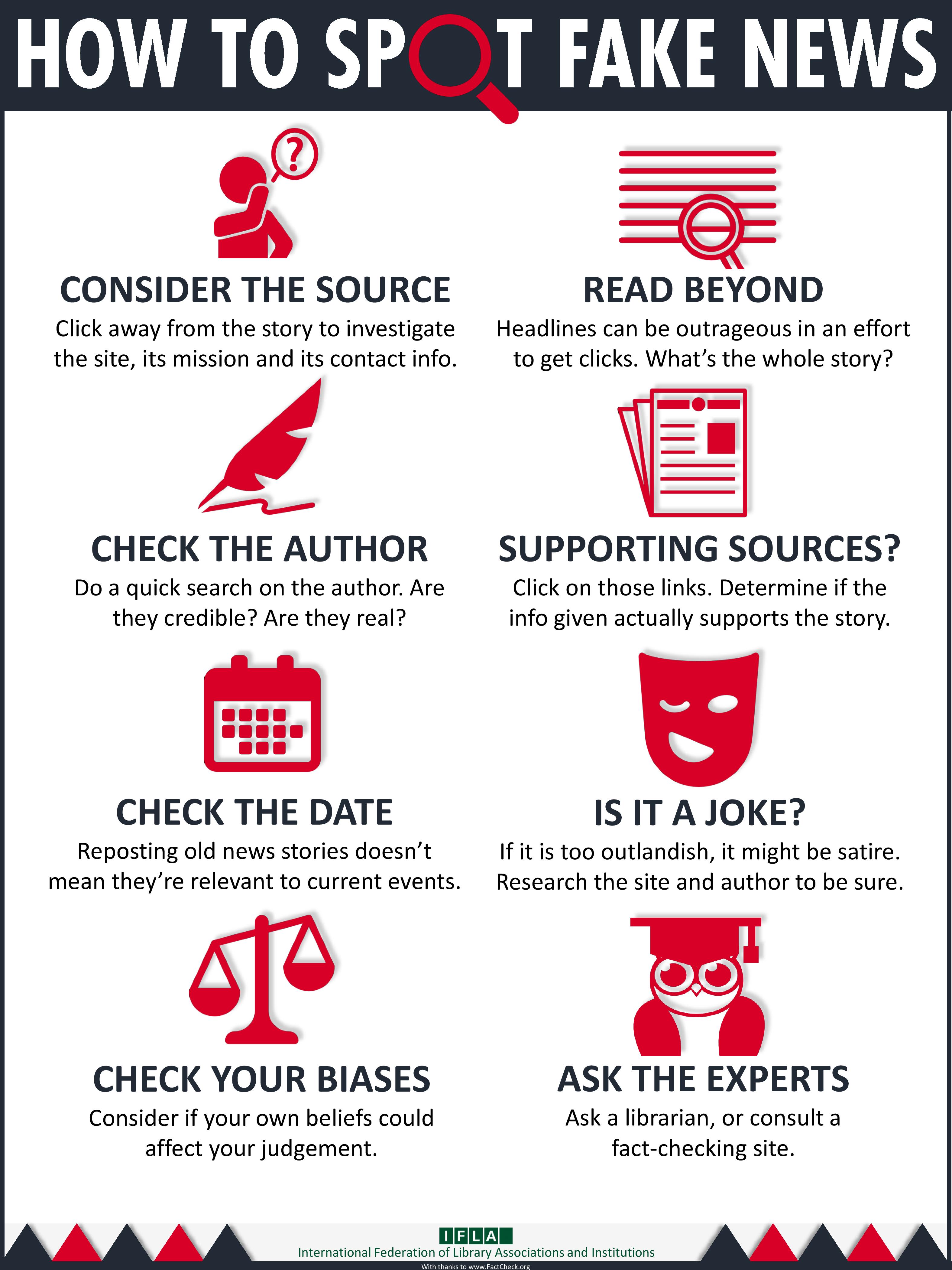Fake news has always been out there, but in today's interconnected world it is flourishing and has become even more difficult to detect. Here you can learn tips and tricks on how to recognize fake news and misinformation on the Internet.
What is "Fake News"?
Fake news stories and misinformation initiatives are mostly created to increase web and social media traffic for the purposes of generating revenue, advancing an agenda, or amusing readers.
Characteristics of fake news story
How to Spot Fake News
(From the International Federation of Library Associations and Institutions)

Search Tips
Test Yourself
"Can You Spot the Deceptive Facebook Post?"
"Can You Spot the Fake News Story?"
Fake News Fighters
What is "Deepfake"?
Deepfake refers to the practice of creating a video or audio segment that makes a person appear to be verbalizing or doing something different than what they are actually saying or doing.
“The goal is to create digital video and audio that appears ‘real.’ A picture used to be worth a thousand words – and a video worth a million – but deepfake technology means that ‘seeing’ is no longer ‘believing.’” (source)
As of June 2020, Sensity (formerly Deeptrace) identified 49,081 deepfake videos, an increase of more than 330% since July 2019.
How to spot Deepfakes
Five ways to spot a Deepfake from Techerati:
Look closely at the source of video. Where did it come from and what was the motivation for making it? Check other sources that you trust to see if the video has been widely shared.
Detect Fakes - The MIT Media Lab has developed the Detect Fakes website to enable you to practice and see the answers for yourself, instead of trying to explain the difference between altered videos and non-altered videos. The trick is to understand there are several artifacts you can look for as opposed to one “single tell-tale sign.”
Specific questions to ask are provided as you pay attention to the face, cheeks and forehead, glasses, facial hair and moles, blinking and size and color of the lips.